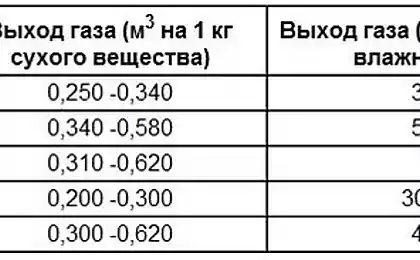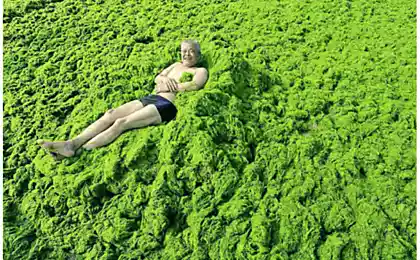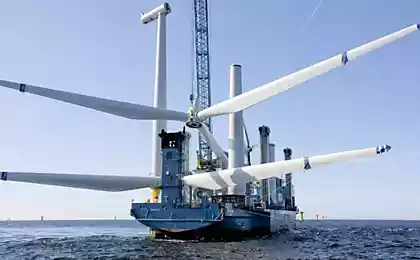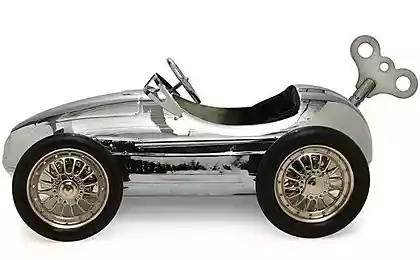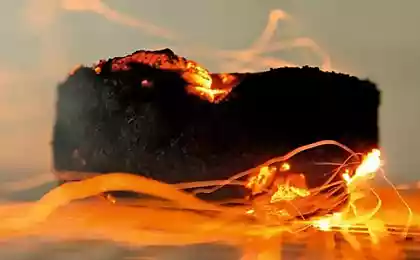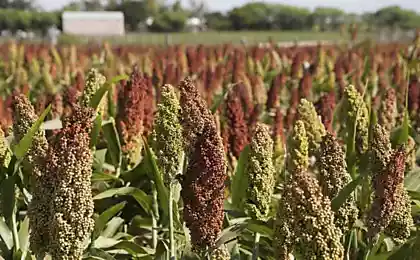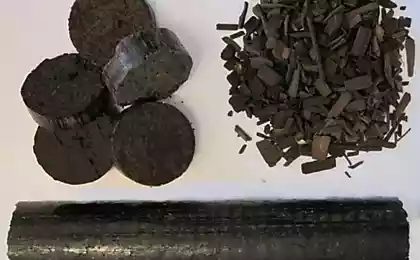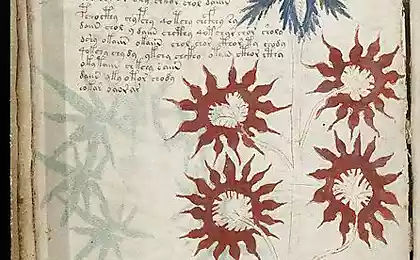720
Environmentally safe biofuels begins to threaten the wild
The use of biofuels, such as ethanol (ethyl alcohol) or diesel fuel (biodiesel), derived from specially grown plants, usually considered as an important step to reduce emissions of carbon dioxide (CO2) into the atmosphere. Of course, the burning of biofuels carbon dioxide gets into the atmosphere is the same as the combustion of fossil fuels (oil, coal, gas). The difference is that the formation of vegetative mass, which was derived biofuels, followed by photosynthesis, a process linked to the consumption of CO2. Accordingly, the use of biofuel is considered as "carbon-neutral technology": first, atmospheric carbon (CO2) associated with plants, and then produced by burning substances derived from these plants. However, the rapid expansion of biofuel production in many places (especially in the tropics) leads to the destruction of natural ecosystems and loss of biological diversity.
Engines running on biofuel use the energy of sunlight stored by plants. Energy fossil fuel is actually also once upon a time (tens and hundreds of millions of years ago) the associated energy of sunlight, and released when burning fossil fuels carbon dioxide was once taken from the atmosphere (and ocean) plants and cyanobacteria. It would seem that biofuels are no different from conventional fossil fuels. But there is a difference, and it is determined time delay, the lag between the binding of CO2 during photosynthesis and release it during combustion of carbon-containing substances. If this lag is very large (as in the case of fossil fuels), the composition of the atmosphere could during this time to significantly change. In addition, if carbon dioxide sequestration occurred for a very long time, the release is very fast. In the case of the use of biofuels, a time lag is quite small: months, years, for woody plants of the decade. Therefore, biofuels are often called "carbon-neutral".
See also: From volcanoes will produce biofuels

With all the advantages of the use of biofuels the rapid increase in its production is fraught with serious dangers for the preservation of wildlife, especially in the tropics. In the latest issue of the journal Conservation Biology published a big review article (yet only in a preliminary, online version), to address the harmful effects of the use of biofuels. The authors, Martha Groom (Martha A. Groom), working within the Interdisciplinary programs of arts and Sciences University of Washington at Bothell (USA) and her colleagues Elizabeth gray and Patricia Townsend, analyzing a large array of literature has proposed a number of recommendations on how to combine the production of biofuel minimizing negative impacts on the environment, biodiversity of the surrounding natural ecosystems.
So, according to Groome and her colleagues, is hardly commendable adopted in many countries, especially in the United States, the practice of using corn as raw materials for the production of ethanol. The cultivation of corn itself requires large amounts of water, fertilizers and pesticides. As a result, when you consider all the costs of growing corn and producing ethanol from it (they're also linked to the consumption of energy from combustion), it appears that the sum of the amount of CO2 released during the manufacture and use of such biofuels, is almost the same as for traditional fossil fuel! For corn-based ethanol, ratio, estimating greenhouse gas emissions for a specified energy yield (in kg of CO2 per megajoule,106 joules, the energy) equal 81-85. For comparison, the corresponding figure for petrol (fossil fuel) is 94, and for conventional diesel fuel — 83. When using sugar cane the result is significantly better — 4-12 kg CO2/MJ.
But the real positive jump is observed at the transition to the use of perennial grasses, for example one of the types of wild millet — the so-called switchgrass (Panicum virgatum), a common plant-grass prairies of North America. Due to the fact that a significant portion of fixed carbon is stored perennial grasses in their underground organs, and accumulates in soil organic matter, the territories occupied by these high (sometimes taller than a man) herbs that function as binding sites of ("flow") of atmospheric CO2. The rate of emission of greenhouse gases during the production of biofuel from switchgrass is characterized by a negative value: -24 kg CO2/MJ (i.e. CO2 decreases in the atmosphere).
See also: Of Christmas trees will make biofuels
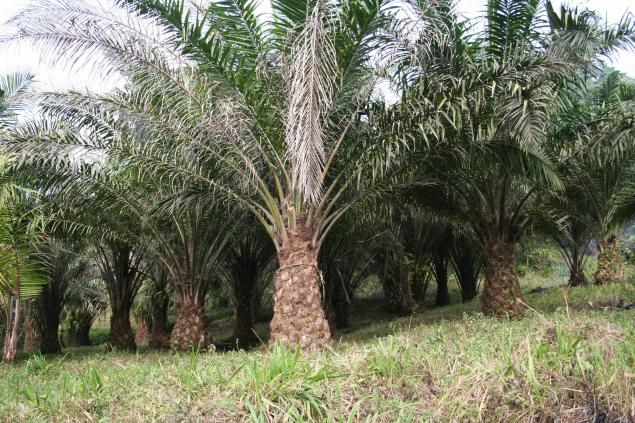
Even better holds the carbon multi-species vegetation of the prairies. The rate of greenhouse gas emissions in this case is also negative: -88 kg CO2/MJ. However, the rate of growth (productivity) of perennial grasses is relatively low. Therefore, the amount of fuel (expressed in the amount of gasoline in liters) that can be obtained with natural Prairie is only about 940 l/ha. For millet this value is already 2750-5000, corn — 1135-1900, and sugar-cane — 5300-6500 l/ha.
Effective turns and the use of fast growing trees, e.g. poplars, and various willows. In a number of areas of the globe, primarily in the tropics, the widespread introduction of crops used for biofuels, due to deforestation. In Indonesia and Malaysia vast territory until recently occupied by tropical rain forests — ecosystem, not only characterized by very high primary production (cf. also: Primary production), but maximum species diversity of plants and animals, is now converted into plantations of oil palm and other plants suitable as raw materials for biofuels. In Brazil, sugarcane plantations replace interesting, also characterized by high species diversity, marsh ecosystems. Especially intensively this process goes in recent years after the signing of the agreement between Brazil and the USA on large supplies of ethanol.
Obviously, replacing fossil fuels and thus reducing the growth of CO2 in the atmosphere, biofuels actually may threaten many natural ecosystems, especially tropical. It is certainly not in the biofuels and unreasonable, "unfriendly nature" of the politics of its production, the destruction of diverse natural ecosystems and replacing them is extremely simplified ecosystems in agricultural lands. Great expectations, the authors impose on the use as raw material for biofuel mass of microscopic planktonic algae that can be grown in ponds (sometimes even with brackish water) or in special bioreactors. The yield of useful product per unit area significantly higher than in the case of ground vegetation.
Source: /users/1005
Engines running on biofuel use the energy of sunlight stored by plants. Energy fossil fuel is actually also once upon a time (tens and hundreds of millions of years ago) the associated energy of sunlight, and released when burning fossil fuels carbon dioxide was once taken from the atmosphere (and ocean) plants and cyanobacteria. It would seem that biofuels are no different from conventional fossil fuels. But there is a difference, and it is determined time delay, the lag between the binding of CO2 during photosynthesis and release it during combustion of carbon-containing substances. If this lag is very large (as in the case of fossil fuels), the composition of the atmosphere could during this time to significantly change. In addition, if carbon dioxide sequestration occurred for a very long time, the release is very fast. In the case of the use of biofuels, a time lag is quite small: months, years, for woody plants of the decade. Therefore, biofuels are often called "carbon-neutral".
See also: From volcanoes will produce biofuels

With all the advantages of the use of biofuels the rapid increase in its production is fraught with serious dangers for the preservation of wildlife, especially in the tropics. In the latest issue of the journal Conservation Biology published a big review article (yet only in a preliminary, online version), to address the harmful effects of the use of biofuels. The authors, Martha Groom (Martha A. Groom), working within the Interdisciplinary programs of arts and Sciences University of Washington at Bothell (USA) and her colleagues Elizabeth gray and Patricia Townsend, analyzing a large array of literature has proposed a number of recommendations on how to combine the production of biofuel minimizing negative impacts on the environment, biodiversity of the surrounding natural ecosystems.
So, according to Groome and her colleagues, is hardly commendable adopted in many countries, especially in the United States, the practice of using corn as raw materials for the production of ethanol. The cultivation of corn itself requires large amounts of water, fertilizers and pesticides. As a result, when you consider all the costs of growing corn and producing ethanol from it (they're also linked to the consumption of energy from combustion), it appears that the sum of the amount of CO2 released during the manufacture and use of such biofuels, is almost the same as for traditional fossil fuel! For corn-based ethanol, ratio, estimating greenhouse gas emissions for a specified energy yield (in kg of CO2 per megajoule,106 joules, the energy) equal 81-85. For comparison, the corresponding figure for petrol (fossil fuel) is 94, and for conventional diesel fuel — 83. When using sugar cane the result is significantly better — 4-12 kg CO2/MJ.
But the real positive jump is observed at the transition to the use of perennial grasses, for example one of the types of wild millet — the so-called switchgrass (Panicum virgatum), a common plant-grass prairies of North America. Due to the fact that a significant portion of fixed carbon is stored perennial grasses in their underground organs, and accumulates in soil organic matter, the territories occupied by these high (sometimes taller than a man) herbs that function as binding sites of ("flow") of atmospheric CO2. The rate of emission of greenhouse gases during the production of biofuel from switchgrass is characterized by a negative value: -24 kg CO2/MJ (i.e. CO2 decreases in the atmosphere).
See also: Of Christmas trees will make biofuels

Even better holds the carbon multi-species vegetation of the prairies. The rate of greenhouse gas emissions in this case is also negative: -88 kg CO2/MJ. However, the rate of growth (productivity) of perennial grasses is relatively low. Therefore, the amount of fuel (expressed in the amount of gasoline in liters) that can be obtained with natural Prairie is only about 940 l/ha. For millet this value is already 2750-5000, corn — 1135-1900, and sugar-cane — 5300-6500 l/ha.
Effective turns and the use of fast growing trees, e.g. poplars, and various willows. In a number of areas of the globe, primarily in the tropics, the widespread introduction of crops used for biofuels, due to deforestation. In Indonesia and Malaysia vast territory until recently occupied by tropical rain forests — ecosystem, not only characterized by very high primary production (cf. also: Primary production), but maximum species diversity of plants and animals, is now converted into plantations of oil palm and other plants suitable as raw materials for biofuels. In Brazil, sugarcane plantations replace interesting, also characterized by high species diversity, marsh ecosystems. Especially intensively this process goes in recent years after the signing of the agreement between Brazil and the USA on large supplies of ethanol.
Obviously, replacing fossil fuels and thus reducing the growth of CO2 in the atmosphere, biofuels actually may threaten many natural ecosystems, especially tropical. It is certainly not in the biofuels and unreasonable, "unfriendly nature" of the politics of its production, the destruction of diverse natural ecosystems and replacing them is extremely simplified ecosystems in agricultural lands. Great expectations, the authors impose on the use as raw material for biofuel mass of microscopic planktonic algae that can be grown in ponds (sometimes even with brackish water) or in special bioreactors. The yield of useful product per unit area significantly higher than in the case of ground vegetation.
Source: /users/1005
What was the Soviet Union in 1974 in color photographs
Sculptures from wood shavings from the Siberian teacher
